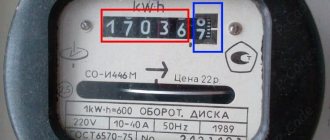Of course, every person on the planet has at least once succumbed to electric shocks when they touched a door handle, car or other objects. Many people ask themselves the question: “What is this? How does it work? Why is this action happening?” One thing we can say is that this is static electricity, which is important to be aware of. This and many other issues on this topic are discussed in this article.
The nature of static electricity
Their school textbooks know that a discharge can only jump between a positively charged object and a negatively charged one. And in most cases, we ourselves are the carriers of the positive charge. Upon contact with a voluminous metal object or another person (since our body is 80% water, the tissues of the human body are a priori excellent conductors of electricity), a discharge occurs, that is, a phenomenon when your body is discharged, otherwise it is freed from its positive charge. But how to remove static electricity without harmful consequences and discomfort? Let us first examine the background of its occurrence.
How to protect yourself from it
Methods of protecting against electricity at work and at home are different. The reason lies in the potential consequences and the necessary measures to prevent the accumulation of a large charge.
In production, to prevent the harmful and dangerous effects of static, a set of the following protective measures is taken:
- preventing the penetration of electric current into the work area;
- increasing the conductivity of materials and the environment;
- increasing the resistance of machines and mechanisms to current discharges;
- reduction in the speed of processing and transportation of materials;
- creation of a full-fledged, well-equipped grounding system.
Grounding on machines
Attention ! Methods for preventing discharges are divided into two types: reducing the activity of creating static and accelerating the release of energy into the soil.
To eliminate the likelihood of discharges occurring in everyday life, the following measures are applied:
- replacing furniture with antistatic ones;
- the use of wood and other materials for finishing rooms that remove static;
- use of wooden and metal combs and combs;
- woolen clothing is removed slowly;
- wet cleaning;
- silk items are treated with antistatic sprays
- ventilation;
- use of antistatic brushes.
A source of danger in everyday life
There is no need to install special grounding at home to remove static electricity. But in an enterprise environment it will be necessary. In such equipment, the resistance point should be no higher than 1 megaohm.
Where does the positive charge in our body come from?
Let us explain it in a language that is accessible and understandable to everyone, even those who are not experienced in physics. Material objects accumulate any charge through friction. Each atom that makes up any material body (including the human one) has electrons rotating around its nucleus. Let's give a simple example.
When we take off our clothes over our heads and throw the blouse on the sofa, a large number of electrons, through friction, seem to be erased from their orbits and transferred to the blouse that we took off. It is well known that electrons are negatively charged particles, and therefore our blouse becomes negatively charged, since in its tissues there is now an excess of electrons from our body, while we ourselves become positively charged, since there is now a shortage of negatively charged particles in the tissues.
If we then decide to touch a metal object or another person, we will feel an electric shock. A microscopic lightning discharge will appear between the fingertips of the hand and the object, during which a discharge will occur in the literal sense of the word. Our body, through this discharge, will absorb the missing amount of electrons from this object, and the energy in it will again become balanced. Plus and minus will be balanced again.
Physical basis of the formation of electrostatics
As you know, substances consist of atoms and molecules. The nuclei of atoms, in turn, consist of protons that have a positive charge and neutrons that do not. Electrons, which are carriers of negative charges, rotate around the nucleus.
The charges of protons and electrons are equal. Their number must also match, ensuring the neutrality of atoms and molecules. Some electrons are weakly attached to their nucleus and, with the slightest influence, break away and begin to move freely. At the same time, they carry a negative charge, and the rest of the atom becomes positive.
As free charges accumulate, they create static electricity. When touching such areas, a person feels a discharge. Most often, electrostatics accumulate on the surface or inside a material that does not have the ability to conduct current. In other words, charge is collected and stored until a certain point in time on a dielectric or insulated conductor.
The formation of static electricity and the flow of charges occurs at the same time. If the first process occurs more intensely compared to the second, then the charge will accumulate. This phenomenon is common both in everyday life and in nature.
For example, during bad weather, static tension begins to accumulate in the atmosphere in a certain place. At this time, the negative charge on the ground beneath him increases. The result is a “structure” that looks like a giant capacitor. If there is a sufficiently large potential difference, a breakdown occurs in the form of lightning. In this case, the current flows along the path where the resistance is minimal.
If there is a building, electricity will enter the ground through a grounded lightning rod, without causing harm to anyone. In open areas, lightning is most likely to strike a tall tree. If there is a car standing under it or a person hiding under it, they may get hurt.
Lightning has another type of destructive effect. We are talking about the phenomenon of electromagnetic induction. Since lightning is an instantaneous electric current, it creates a powerful electromagnetic field, which in turn creates an electric current in metal parts. This is another reason for the accumulation of static charge, which can reach a significant value. In multi-storey buildings, a potential equalization system is used, which prevents this effect from occurring.
Another option for causing harm is the impact of accumulated electrical charge on electronic devices and other equipment. Moreover, even a simple touch to the conductor can cause its breakdown.
How does static electricity accumulate in our body?
But in order for an imbalance of charged particles to occur in your body, you don’t have to take something off yourself. Sitting in a car, we rub against the seat. As we walk, clothing can remove some electrons from our body. Any friction helps to transfer a certain amount of electrons from somewhere to something. And now you have already turned into a charged material body, which, upon contact with any conductor (metal or other fairly massive current-carrying object), will definitely discharge, that is, it will absorb the missing electrons from this object through a spark that jumps between you and this object. But how to remove static electricity from yourself and surrounding objects?
What causes this static discharge?
A static discharge is formed due to electrification at the edge of two areas or materials. This effect is obtained due to the friction of a dielectric with an isolated electrically conducting plane or the contact of two dissimilar substances with different atomic and molecular powers. Moreover, the cause of this may not always be an electrical device. Often this can be:
- carpet;
- clothing made of wool, silk or artificial fibers;
- armchair;
- person, etc.
In order to remove static electricity from a person, there are many ways: - increase the humidity in the house by opening a window or installing a humidifier;
- touch a grounded device;
- place a cotton cloth between those types of materials that accumulate static;
- minimize contact between two moving bodies. After all, a large amount of friction only maintains static charges. When walking on carpets, you may want to experiment with changing the soles of your house shoes.
Removing static electricity from clothing is quite simple if you follow the basic rules. Use an antistatic agent. It will help remove the electrical charge from the fabric. They are produced in the form of sprays, which is very convenient for use. In many stores you can find clothes rinsers that contain antistatic agents. Also protects well against static and skin cream.
Various gels, lotions, sprays and varnishes that contain an antistatic ingredient will help remove static electricity from your hair. They should only be applied to hair. People who have dry, thin and split hair need to use special oil-based products during styling. This is, for example, silk for hair.
The first and main rule
A sufficiently grounded object will never accumulate static electricity. What does "grounded" mean? This means constant contact with the earth's surface. But in order to “contact the earth’s surface,” the shoes must have conductive soles. At the present time, this is hardly possible, since all modern shoes are made with soles made of synthetic polymers, rubber, rubber, etc.
“But how to remove static electricity from a person in this case?” - you ask. How else can you “ground yourself”? The answer is simple, and it lies in increased air humidity. If the level of air humidity in the room is even slightly higher than usual, the air itself, saturated with moisture, will become an excellent “discharger” for your body. This is why static electricity does not occur when humidity is high, just as it does not occur if you, say, get wet in the rain.
What is static
The situation can be aggravated by dry air in the room or workshop, as well as the presence of reinforced concrete walls. Removing static is a top priority for employees of any enterprise. It is important to properly combat its formation. However, first of all it is necessary to understand the physical laws and reasons for formation.
An electric field is formed by contact between two materials, cutting rolled materials and under the influence of an electric field. The primary production task is effective voltage neutralization.
How to remove static from yourself painlessly?
The spark during discharge is not as painful as it is unpleasant. How to remove static electricity from your body or, more precisely, how to discharge yourself without receiving an unpleasant electric shock? To do this, you need to take any small steel product, such as a nail file, a teaspoon or tweezers, as a result of which the positive potential of your body will spread to them. Next, you should touch the edge of the tweezers to the radiator, car or other massive metal object.
Then the spark will jump not between your fingers and the tweezers, but between the tweezers and the object you touch with them. In this case, you will not experience any negative feelings. You just have to do this over and over again at certain intervals, otherwise sooner or later the charge will accumulate in you again, and you will still receive an electric shock.
Taking a shower
The feeling of freshness and energy after taking a shower is familiar to everyone. It is believed that such a procedure balances the energy of the body. There is no esotericism or mysticism here. Everything is simple to the point of banality. Water, depending on its composition - both a conductor and a dielectric, “draws” excess static electricity onto itself, while simultaneously washing away charged particles of dust and contaminants. In this way, it actually leads to an ideal energy balance, eliminating the electrostatic potential that causes discomfort. Taking a bath is not as effective, but nothing prevents you from completing the bath procedure with a soft contrast shower.
What clothes are prone to the accumulation of static tension?
Many people wonder how to remove static electricity from clothes. The fact is that clothing itself cannot accumulate either a positive or a negative charge. For it to accumulate, there needs to be friction between the pieces of clothing. And friction occurs when wearing clothes, taking them off, etc.
And in these cases, the charge accumulates not in the clothes themselves, but in your body. Only at the moment of parting with clothes can a spark fly between you and a wardrobe item. This is especially true for clothing made from synthetic fibers. Taking a synthetic sweater over your head, you can see with your own eyes the discharges flickering between its fabric, the fabrics of the clothes remaining on you, your hair and your body. This is especially noticeable when the lights are off. Even the air is filled with the smell of ozone, which occurs only during moments of electrical discharges, and the hairs on your head stand on end as they begin to repel each other.
But the piece of clothing that shocked you goodbye does not completely return to your body all the electrons taken from it, and therefore, after such undressing procedures, you always turn into an object with a “plus” sign, which sooner or later will be discharged to “minus”.
To prevent static charge from accumulating while wearing synthetic clothing, you need to wash it with special conditioners that prevent the wardrobe item from collecting electrons from your body. There are many such conditioners, and they are all sold in any household chemical stores.
Methods for getting rid of static on clothes
Most often, static electricity accumulates on synthetic clothing, which causes unpleasant sensations - small current charges, electrified hair, etc.
The following tools will help you cope with the problem:
- antistatic agents, special detergents, antistatic cloths for drying clothes. Modern advances in the chemical industry make it possible to quickly and permanently get rid of the problem, but they must be used regularly if synthetics predominate in your wardrobe;
- baking soda. During washing, add a quarter cup of detergent to the washing machine drum (more can be done, depending on the number of items). Baking soda creates a protective layer that prevents the accumulation of electrons and the appearance of static;
- vinegar. After finishing the main wash cycle, pause the washing machine and add 50 ml of apple cider vinegar. Run the washing machine in rinse and spin mode;
- safety pin. Pin a metal pin to the inside of the garment. A metal that is a good conductor of current will remove the charge of electrons, preventing the formation of static on products. Changes folded in pockets and metal hangers on which things are stored work in a similar way;
- natural fabric. When washing synthetic items, add a couple of cotton or linen items along with them. Natural material will take away the bulk of the static charge.
When washing, place a small ball of foil in the washing machine drum. This will neutralize electrons and prevent static electricity. However, never put foil in the laundry dryer.
"Evil" car
Very often, a static discharge spark jumps between the car and the motorist (passenger). What should you do if your car constantly shocks you? How to remove static electricity from a car so that every time you get out of the car, it doesn’t “bite” you goodbye?
Here the problem, again, lies in you, that is, in your behavior behind the wheel and in the materials from which the car seat covers or the seat itself are made. When you're behind the wheel, you're still moving, creating friction. A charge accumulates in you, and the rubber mats of the car prevent discharge, and the voltage remains in you the entire time you are in the car, until you, getting out of it, touch part of your body to the metal body of the car. At this moment, discharge occurs. There is little pleasant, and therefore you should stock up on special means for treating car seats. These antistatic agents come in the form of aerosols. By spraying this product on your seat covers, you will prevent them from accumulating a positive charge during friction.
But a car is a thing that can itself accumulate static, especially in dry weather. To prevent this from happening and your car not to shock you in vain, buy a special strip (strap) at an auto parts store, which is attached under the rear bumper and is powered to the body of the car. Current types of antistatic straps are even attached to the exhaust pipe. The tip of such a strip, constantly in contact with the ground, will prevent the accumulation of static in the body.
Influence
The most striking manifestation of static electricity can be found in industrial production. Due to his fault, unexpected ignitions of flammable materials occur due to sparks generated when the operator comes into contact with grounded equipment. Electrostatic energy can carry a discharge of 1.4 joules, which is enough to ignite flammable substances.
Interesting ! To prevent such situations, GOST was developed, according to which the accumulated energy from a static charge cannot exceed 40% of the required energy for ignition of substances or materials.
The effect of static electricity affects the hair
Humans are carriers of particles that accumulate on clothing. In this case, the main condition for the accumulation of charge is the presence of shoes with soles that do not allow electricity to leave the body.
A person feels static on himself in the form of prolonged tension or as a momentary discharge. In the first case, there is a slight tension over a long period of time, and in the second there is a short-term release, felt as a tingling sensation. Rarely does the discharge power exceed 7 joules, so electricity does not pose a direct danger, but there is an indirect effect. It manifests itself in the form of muscle contraction, which can cause work-related injuries.
You may be interested in this Features of power measurement
Attention ! After muscle contraction, body parts can involuntarily become caught in working and moving mechanisms.
Constant discharges begin to affect a person. It becomes more difficult for him to work, irritability and fatigue increase. The rhythm of sleep and the functioning of the nervous system as a whole worsens.
"Evil" computer
The computer itself will not be able to accumulate a static discharge, since its entire body is powered to ground, that is, to minus from the outlet. Therefore, the question of how to remove static electricity from a computer does not make sense in itself. Static electricity, if any household appliance plugged into an outlet shocks you, should be removed not from it, but from you. This is done using the methods described above.
Taking care of your hair
It may sound strange, but our hairstyle is also a kind of generator and accumulator of static electricity, and quite effective at that. The more voluminous the hair, the more potential it can create and accumulate. As a result, the hairstyle begins to live its own life, weakly reacting to the owner’s attempts to call it to order.
What to do? First, eliminate the habit of washing your hair every day. Too dry hair is a haven for electrostatics. Secondly, use the “correct” comb - wooden, metal, plastic antistatic or a boar bristle brush, which is now fashionable. Thirdly, choose a suitable headdress. Wool, felt, natural leather and fur are the best materials.
In emergency cases, you can quickly calm down electrified hair with plain water - spray it on your hair or straighten it with wet palms. The method is effective, but its effect is short-lived.
"Evil" phone
Many phone models have metal parts in their casing, contact with which can also cause a small spark to jump between the gadget and you. The question of how to remove static electricity from a phone has the same explanation, namely, the “plus” accumulates in you, and not in the gadget. Get rid of the accumulated positive charge in your body, and the phone will not “snarl” at you.
Effective struggle in production
There are various methods for removing electrical charges from different materials. However, first of all, it is necessary to assess the voltage level.
In any production environment, very high voltage is inevitable. This can be especially obvious in the production of textiles, various PVC films, foil, and paper. It is important to understand that high electrostatics are often the cause of material fires and work-related injuries.
You can get rid of static by knowing about the interaction of different materials. Positive charges accumulate:
- glass;
- quartz;
- nylon;
- silk;
- air;
- leather;
- asbestos;
- aluminum;
- mica.
Paper, wood, steel, and cotton have neutral charges. Negative charges are distributed over the surface:
- silicone;
- Teflon;
- Selena;
- brass;
- copper;
- nickel;
- latex;
- amber;
- polyurethane;
- polystyrene.
The above knowledge makes it possible to understand how different bodies interact during friction. An example of the interaction of bodies: a person walking on a carpet in woolen socks. In such a situation, the human body will acquire a certain charge. Every car driving on a dry road acquires a charge of about 10 kV. In ordinary life, the potential can be very great. However, in most cases the charge does not have much power and is therefore not dangerous. It is worth knowing that with increased humidity, static current appears less.
If you are working with a semiconductor board, then it is worth ensuring a high charge drain rate. For this purpose, use a floor covering with low electrical resistance. Forced shunting of electrical boards and special tools with a grounded head are also used.
When working with flammable liquids, the vehicle carrying them must be grounded. The aircraft is also equipped with a metal cable. The cable provides reliable protection against accumulated static.
The main methods of protection are:
- removal of accumulated charge into the environment;
- reduction in generation;
- increased conductivity of solids;
- reduction of overvoltage in structures;
- neutralization of charges when using special induction neutralizers in production, as well as modern radioisotope means.
During neutralization, charges are compensated by opposite signs. They are generated by a special device. The enterprise must have protective equipment.
Other measures to reduce the statistical field:
1. Wherever possible, according to production technology, it is important to exclude the spraying of flammable substances, splashing of compounds, and crushing.
2. If technologically feasible, it is necessary to purify flammable gases from suspended solid/liquid particles. In turn, liquids should be cleaned of contamination by impurities.
3. It is necessary to ensure that the speed of movement of materials in devices and production lines exceeds those specified in the project.
Note! In explosive industries, it is recommended to produce any transport and technological equipment exclusively from those materials that have a specific volumetric electrical resistivity of no more than 105 ohm m.
Video
To understand the intricacies of dealing with static electricity, determine its nature and causes of occurrence. The following video clips can help you solve the problem:
Young mother, wife and part-time freelancer. Being a lawyer by training, I am accustomed to collecting and providing the most complete and reliable information. Constantly improves in the professional field and strives for personal growth and development.
Found a mistake? Select the text with the mouse and click:
If your favorite things show the first signs of gestation in the form of untidy pellets, you can get rid of them using a special machine - a shaver. It quickly and effectively shaves off clumps of fabric fibers and returns things to their proper appearance.
The habit of using an automatic washing machine “sparingly” can lead to the appearance of an unpleasant odor in it. Washing at temperatures below 60℃ and short rinses allow fungi and bacteria from dirty clothes to remain on internal surfaces and actively multiply.
Fresh lemon is not only suitable for tea: clean dirt from the surface of an acrylic bath by rubbing with half a cut citrus, or quickly wash the microwave by placing a container of water and lemon slices in it for 8-10 minutes at maximum power. The softened dirt can simply be wiped off with a sponge.
Before removing various stains from clothing, you need to find out how safe the selected solvent is for the fabric itself. It is applied in a small amount to an inconspicuous area of the item from the inside out for 5-10 minutes. If the material retains its structure and color, you can move on to stains.
The easiest way to remove scale and carbon deposits from the soleplate of the iron is with table salt. Pour a thick layer of salt onto the paper, heat the iron to maximum and run the iron over the salt bed several times, applying light pressure.
Threads made of gold and silver, which were used to embroider clothes in the old days, are called gimp. To obtain them, the metal wire was pulled for a long time with pliers to the required fineness. This is where the expression “to drag out the rigmarole” came from - “to do long, monotonous work” or “to delay the completion of a task.”
The dishwasher cleans more than just plates and cups. You can load it with plastic toys, glass lamp shades and even dirty vegetables, such as potatoes, but only without using detergents.
Stretch ceilings made of PVC film can withstand from 70 to 120 liters of water per 1 m2 of their area (depending on the size of the ceiling, the degree of its tension and the quality of the film). So you don’t have to worry about leaks from neighbors above.
There are special traps to combat moths. The sticky layer with which they are covered contains female pheromones that attract males. By sticking to the trap, they are eliminated from the reproduction process, which leads to a decrease in the moth population.
Source
Plaid material
Let's look at the main materials from which bedspreads and rugs are made:
- Fleece, viscose, faux fur and acrylic are synthetic products that contribute to the electrification of the blanket.
The acrylic bedspread is very easy to clean. This blanket is soft to the touch and is mainly characterized by its bright color. But this is a synthetic product, the material of which practically cannot allow air to pass through. Synthetic fibers have a not entirely pleasant property - the electrification effect. In addition, much more dust settles on an acrylic blanket than on natural blankets.
Important!
To preserve the quality of the acrylic bedspread, it must be washed at a temperature not exceeding 30 degrees.
Fleece blankets are very soft and thin, but can cause an electrifying effect. Polyester refers to synthetic materials that look similar to natural wool.
Faux fur bedspreads are very popular today. These blankets have an attractive texture that adds a certain element of luxury to the atmosphere. Blankets made of high-quality faux fur are perfectly breathable, pleasant to the touch, do not wear out quickly and do not fade in the sun. In terms of price, they are more expensive than fleece blankets, but cheaper than cotton models. However, faux fur is susceptible to electrification. In addition, it helps attract and retain dust.
Important!
The constant use of synthetic fabrics in everyday life is not recommended. Experts recommend choosing bedspreads only from natural fabrics that have the best quality indicators.
- A wool blanket is one of the best natural materials, characterized by better heat retention and excellent air permeability. This blanket does not electrify, it is very warm and comfortable to sleep under it. In hot weather, this blanket provides comfortable freshness, and in cool weather it warms up.
- Cotton covering is the most affordable in terms of quality and price factor. Cotton blankets warm well, they withstand washing well and are environmentally friendly.
Important!
When choosing such a blanket, you need to pay attention to the quality of the seams, since high-quality tailoring guarantees a long service life of the entire product.
Care instructions
It’s quite simple to take care of the blanket so that it becomes less electrified. To do this you need:
- Periodically shake out any dust from any covers.
- If the blanket is not made of wool, it can safely be machine washed at 30 degrees.
- The coating should be laid out on a table or other horizontal surface and the drying process should be carried out in this form.
- The blanket must “breathe”, so plastic wraps are not suitable for storing bedspreads. It is best to store the blanket in a cardboard box or simply put it on a closet shelf.











